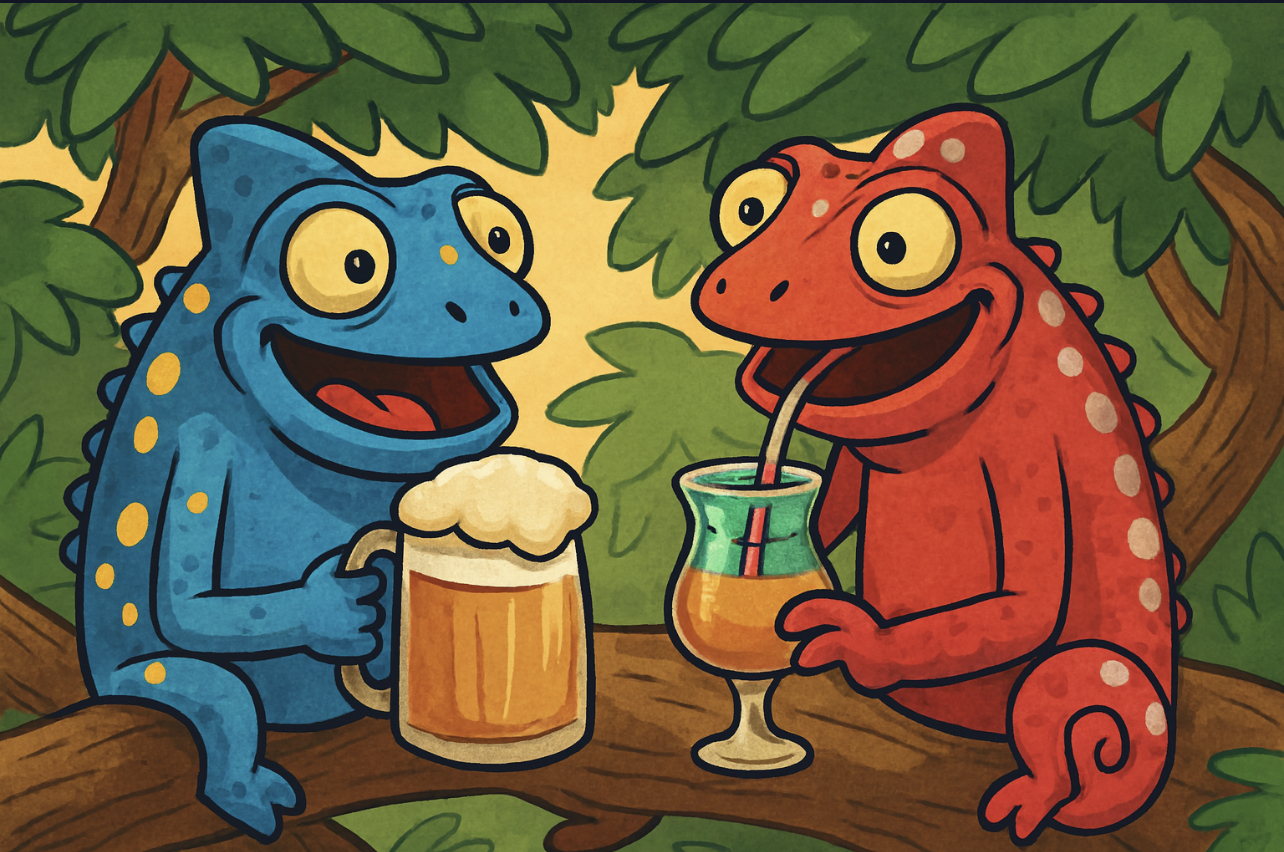Chameleons Are Opportunistic Drinkers
Defining Hydration Strategies
To understand how chameleons manage their water needs, it's essential to distinguish between several key concepts:

- Hydration: The process of acquiring water from various resources, not limited to direct drinking.
- Drinking: The intake of liquid water through the mouth and digestive tract.
- Fog Drinking: Inhaling fog and absorbing moisture through a combination of respiratory and digestive pathways.
- Rain Drinking: The accumulation of water on the bodies of chameleons due to rain or condensation (dew), which is then directed toward the mouth to be swallowed.
Chameleons hydrate in line with their evolutionary experience and adaptation
Evolutionary Realities
Chameleons have evolved in environments where:
There is typically nothing to drink in the high canopies.
Rainfall is unreliable.
They are small, sensitive creatures that must carefully balance water intake and loss.
Their hydration strategy is so clever, it has fooled observers for years. If they relied solely on rain and dew, they would have gone extinct millions of years ago.
Water Loss Prevention Strategies
Chameleons employ a suite of physiological adaptations to minimize water loss:
Impermeable skin that resists water loss (and blocks water intake through the skin).
Completely closed cloacal opening.
Tightly shut mouth.
Minimally opened eyes.
Reabsorption of water from feces.
Reabsorption of water from urine, forming white urate and crystalline orange urate, reducing urine output to nearly zero.
The only unavoidable imperfection: breathing.
Primary Hydration Methods
Chameleons primarily hydrate through two methods:
Nighttime Fog Drinking: Inhaling fog and absorbing moisture via respiratory and digestive tracts.
Ingestion Through Food: Their prey contains 45% to over 90% water, providing substantial hydration.
Emergency and Opportunistic Drinking
Liquid water drinking is not their norm—it's a backup strategy used only in specific circumstances:
Active Rain Drinking: A rare emergency mechanism, typically after prolonged droughts.
Passive Rain Drinking: Water collected on their heads and bodies is directed toward the mouth and swallowed. The Namaqua Chameleon exhibits an extreme version of this via capillary redirection of water flow.
- Licking Dew: Rarely practiced. By the time chameleons become active, dew is usually gone. When dew is abundant, they often ignore it, having already hydrated through fog or passive rain drinking.
Drinking from water bodies: only few times in history observed super rare behavior when on the edge of death.
Captivity Bias and Misinterpretation
In captivity, observations are often skewed due to unnatural conditions:
Excessive Heat: Day and night temperatures are far higher than in the wild, accelerating metabolism and water loss.
Dry Air: Relative humidity is often 20–40% during the day (instead of 50–70%) and 30–40% at night (instead of over 90%), causing severe desiccation.
This leads to unnatural, hysterical drinking behavior, which many keepers mistakenly interpret as normal. In reality, it's a compensatory response to dehydration caused by overheating, dry air, and lack of nighttime fog hydration.
The Fogging Solution
Keepers who use low-temperature nighttime fogging consistently report a dramatic reduction—or complete cessation—of drinking behavior in their chameleons. This confirms that fog hydration is not only natural but essential for their well-being.